Abstract
It has been suggested that translocations, and perhaps other chromosome rearrangements, disturb meiotic disjunction of uninvolved chromosome pairs and predispose to trisomic offspring. If so, then one would expect an excess of translocations not involving chromosome 21 among the parents of regular trisomic Down's syndrome patients. Such translocations have been reported, but mostly as anecdotal single case reports or very small series. In an attempt to collect a larger series, a collaborative study of regular Down's syndrome families was made in southern England. This was retrospective, and covered periods of 7 to 10 years since 1970. The number of regular trisomy families investigated was 1454. Only 945 of the 2908 parents were karyotyped, and 10 balanced reciprocal translocations not involving chromosome 21 were identified, together with one Robertsonian (13q14q). Expressing these as percentages of the parents tested (945), prevalences are as follows: reciprocals 1.06%, Robertsonians 0.11%, and all translocations 1.16%. Expressed as percentages of the total parents (2908), tested and untested, the prevalences are 0.34%, 0.03%, and 0.37% respectively. The 'true' prevalences, that is what would have been found had all parents been tested, must lie between these two sets of figures. The prevalence of reciprocal translocations exceeds that found for consecutive banded newborn infants, which is 0.16%, and this excess may reflect a real interchromosomal effect. Robertsonian translocations in the banded newborn series are at a frequency of 0.11%, identical to that found in the tested parents of regular trisomics. Interpretation of these figures is critically dependent upon the real prevalence of translocations among the newborn, estimates of which increase as technical methods are improving.
Full text
PDF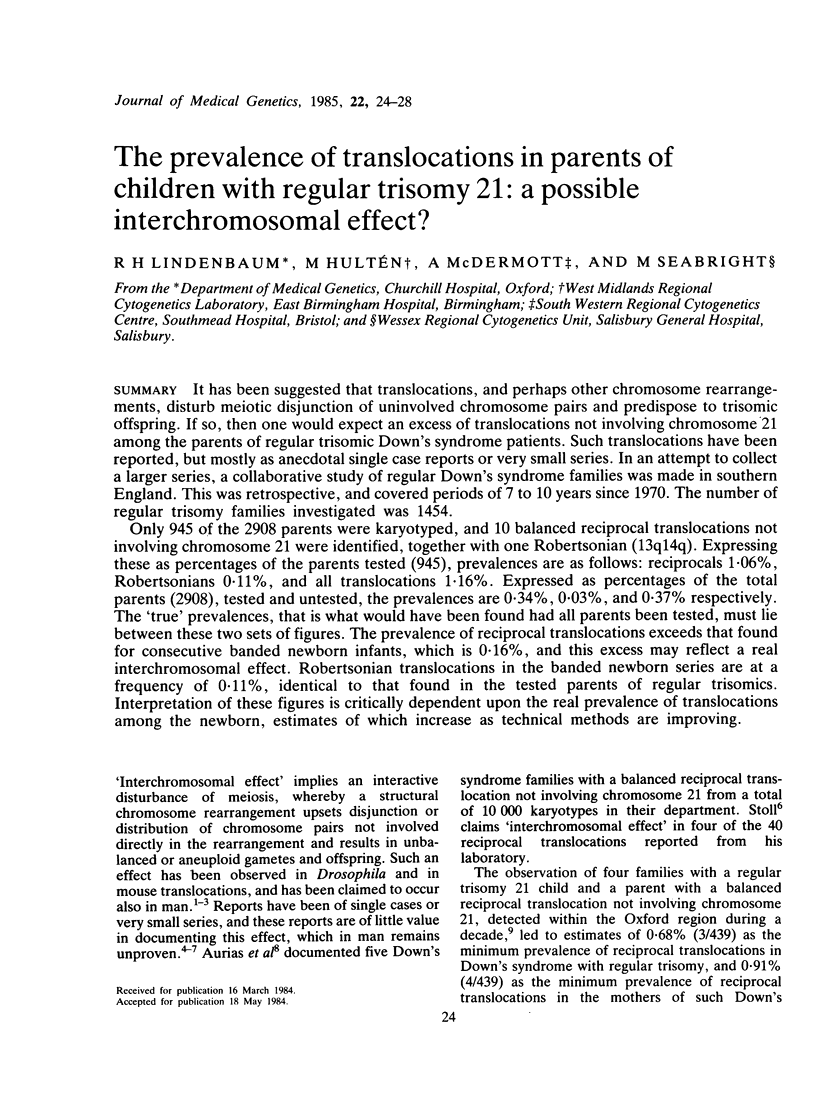
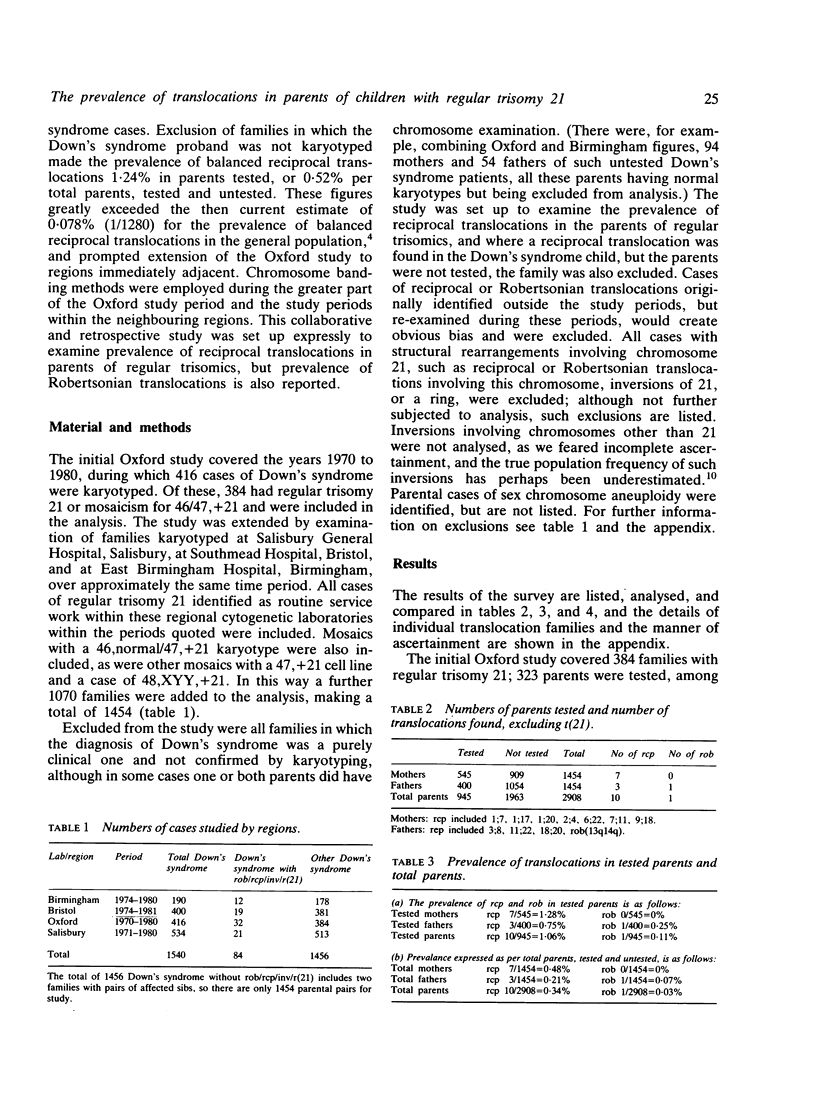
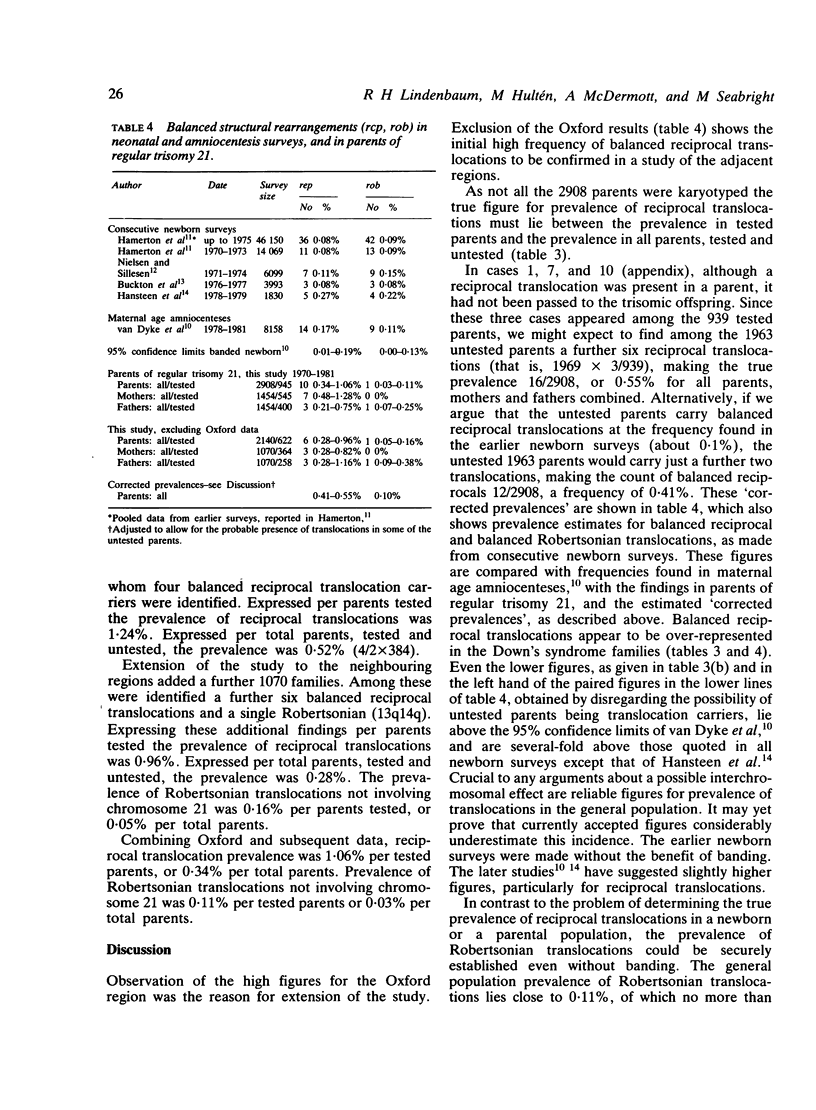
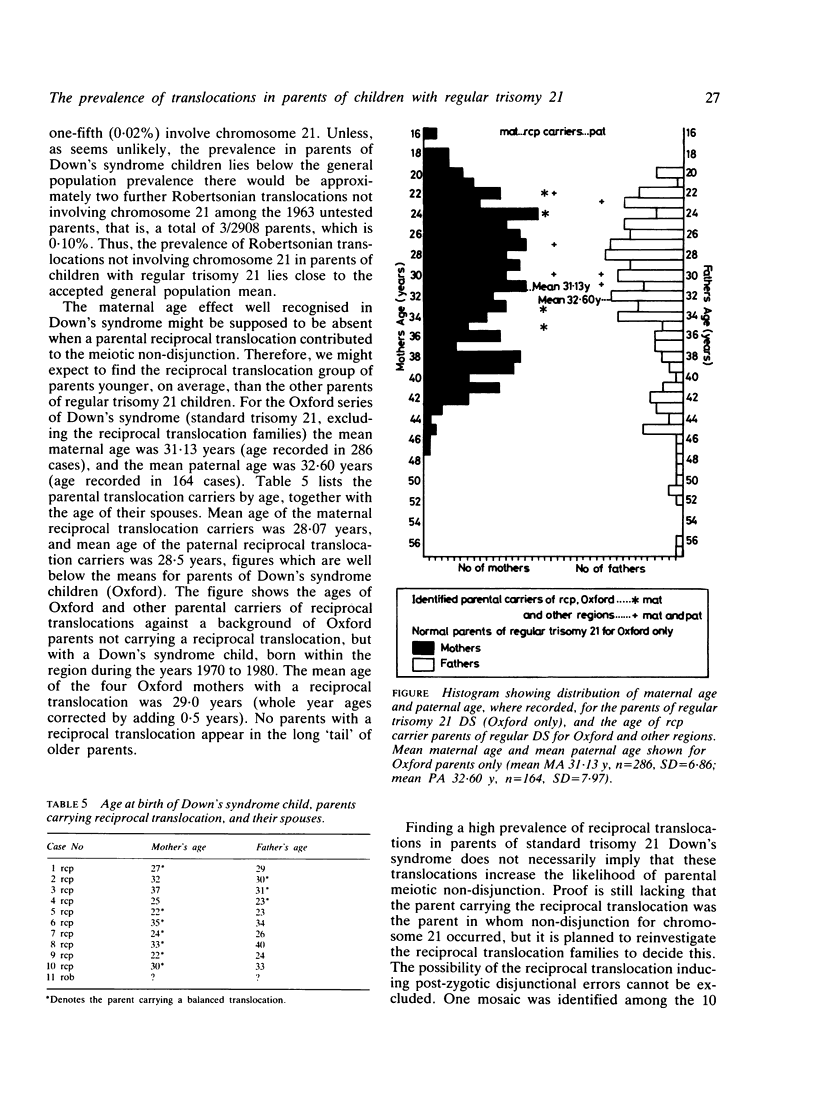
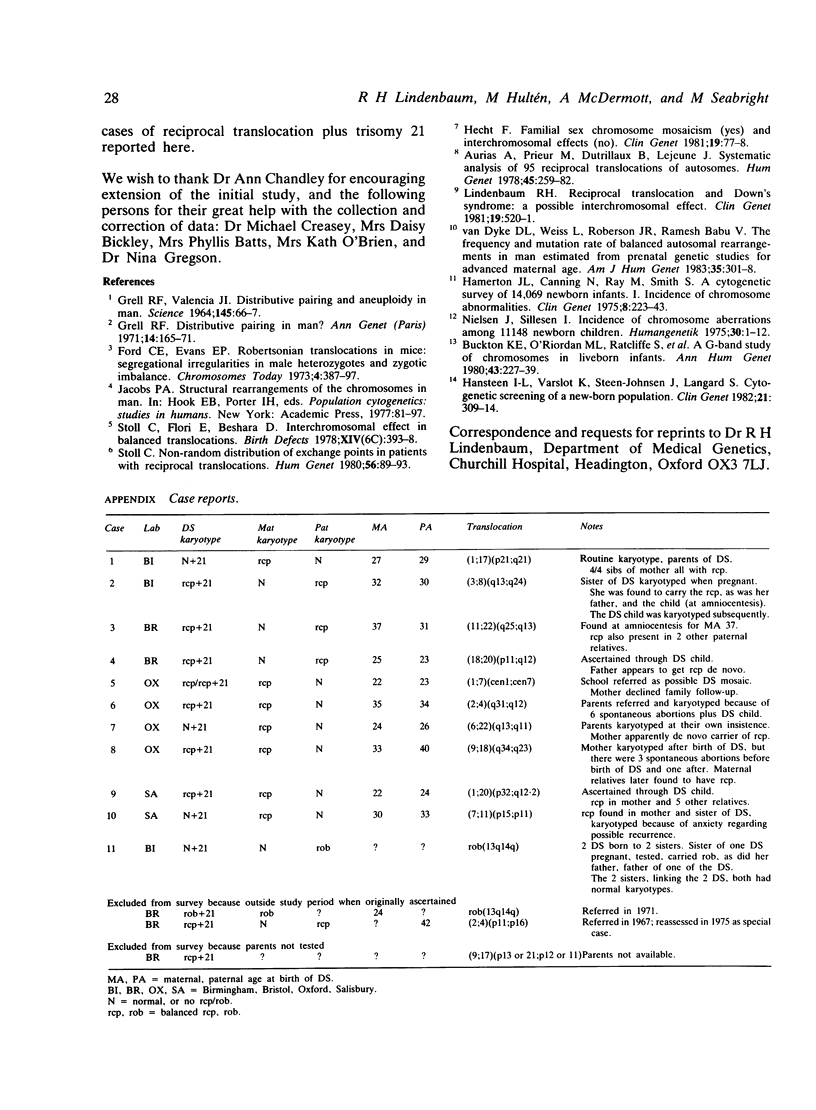
Selected References
These references are in PubMed. This may not be the complete list of references from this article.
- Aurias A., Prieur M., Dutrillaux B., Lejeune J. Systematic analysis of 95 reciprocal translocations of autosomes. Hum Genet. 1978 Dec 29;45(3):259–282. doi: 10.1007/BF00278725. [DOI] [PubMed] [Google Scholar]
- Buckton K. E., O'Riordan M. L., Ratcliffe S., Slight J., Mitchell M., McBeath S., Keay A. J., Barr D., Short M. A G-band study of chromosomes in liveborn infants. Ann Hum Genet. 1980 Jan;43(3):227–239. doi: 10.1111/j.1469-1809.1980.tb01556.x. [DOI] [PubMed] [Google Scholar]
- GRELL R. F., VALENCIA J. I. DISTRIBUTIVE PAIRING AND ANEUPLOIDY IN MAN. Science. 1964 Jul 3;145(3627):66–67. doi: 10.1126/science.145.3627.66. [DOI] [PubMed] [Google Scholar]
- Grell R. F. Distributive pairing in man? Ann Genet. 1971 Sep;14(3):165–171. [PubMed] [Google Scholar]
- Hamerton J. L., Canning N., Ray M., Smith S. A cytogenetic survey of 14,069 newborn infants. I. Incidence of chromosome abnormalities. Clin Genet. 1975 Oct;8(4):223–243. doi: 10.1111/j.1399-0004.1975.tb01498.x. [DOI] [PubMed] [Google Scholar]
- Hansteen I. L., Varslot K., Steen-Johnsen J., Langård S. Cytogenetic screening of a new-born population. Clin Genet. 1982 May;21(5):309–314. doi: 10.1111/j.1399-0004.1982.tb01377.x. [DOI] [PubMed] [Google Scholar]
- Hecht F. Familial sex chromosome mosaicism (yes) and interchromosomal effects (no) Clin Genet. 1981 Jan;19(1):77–78. doi: 10.1111/j.1399-0004.1981.tb00673.x. [DOI] [PubMed] [Google Scholar]
- Nielsen J., Sillesen I. Incidence of chromosome aberrations among 11148 newborn children. Humangenetik. 1975 Oct 20;30(1):1–12. doi: 10.1007/BF00273626. [DOI] [PubMed] [Google Scholar]
- Stoll C. G., Flori E., Beshara D. Interchromosomal effect in balanced translocations. Birth Defects Orig Artic Ser. 1978;14(6C):393–398. [PubMed] [Google Scholar]
- Stoll C. Nonrandom distribution of exchange points in patients with reciprocal translocations. Hum Genet. 1980;56(1):89–93. doi: 10.1007/BF00281575. [DOI] [PubMed] [Google Scholar]
- Van Dyke D. L., Weiss L., Roberson J. R., Babu V. R. The frequency and mutation rate of balanced autosomal rearrangements in man estimated from prenatal genetic studies for advanced maternal age. Am J Hum Genet. 1983 Mar;35(2):301–308. [PMC free article] [PubMed] [Google Scholar]


